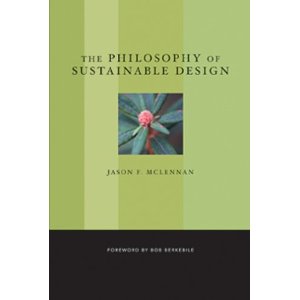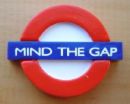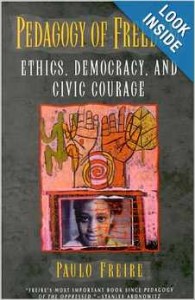
Can Be Considered “Ref A” or the Prime Directive, March 9, 2008
Jason F. McLennan
I came late to bioneering, after I was inspired by Herman Daly's Ecological Economics: Principles And Applications, Brian Czech's Shoveling Fuel for a Runaway Train: Errant Economists, Shameful Spenders, and a Plan to Stop them All; and everything by Paul Hawkin, but especially The Ecology of Commerce.
I have had an interest in the intersection of global science, sustainable political and social and economic orders, and the vulnerability of the nation-state in the face of growing complexity for some time, and many of my other reviews focus on these literatures, as well as the literatures of collective intelligence, global assemlages, wealth of networks, localized resilience, and so on.
I make mention of that broader literature to add emphasis to my view that this book is one of the most extraordinary I have ever encountered. I made a mistake when I first got it months ago and put it sight unseen into my “hard and dense, save for intercontinental trip.” This book is not hard, not dense, and it is both easy to read and intellectually elegant. I can easily see this book as the single mandatory first year or summer pre-reading at any level–undergraduate or graduate–along with contextual books such as:
High Noon 20 Global Problems, 20 Years to Solve Them
Plan B 3.0: Mobilizing to Save Civilization, Third Edition
The Future of Life
The leadership of civilization building: Administrative and civilization theory, symbolic dialogue, and citizen skills for the 21st century and
Collective Intelligence: Creating a Prosperous World at Peace
The sixteen chapters and five appendices are elegant–concise, clear key points, short, just the right mix of photos (including color in a center spread) figures, and text.
The publisher has been criminally remiss in failing to load the varied items that Amazon allows, such as the table of contents. I am increasingly disenchanted with publishers and of the view that Amazon should get into the book publishing business, sending digital copies to FedExKinko's, helping authors self publish (full disclosure: BOTH Fred Smith at FedEx and Jeff Bezos at Amazon blew me off–these guys are simply not serious about innovation).
Preface: Philosophical Beginnings
Chapter 1: The Philosophy of Sustainable Design
Chapter 2: The Evolution of Sustainable Design
Chapter 3: The Principles of Sustainable Design (Biomimicry)
Chapter 4: The Principles of Sustainable Design (Human Vitality)
Chapter 5: The Principles of Sustainable Design (Ecosystem/Bioregional)
Chapter 6: The Principles of Sustainable Design (Seven Generations)
Chapter 7: The Principles of Sustainable Design (Energy/True Cost)
Chapter 8: The Principles of Sustainable Design (Holistic Thinking)
Chapter 9: The Technologies and Components of Sustainable Design
Chapter 10: Shades of Green–Levels of Sustainability
Chapter 11: Productivity and Well-Being
Chapter 12: Greening Your Organization
Chapter 13: Green Economics
Chapter 14: The Sustainable Design Process–Holistic Thinking
Chapter 15: The Aesthetics of Sustainable Design
Chapter 16: The Future of Architecture
Appendix A: The Green Warrior Reading List
Appendix B: Who's Who in Green Design
Appendix C: The Phases of Green Design
Appendix D: The Elements of Green Design Methodology
Appendix F: The Principles of Sustainable Design–Summary
I put this book down with several thoughts:
1) Enormously impressed with the University of Oregon in Eugene, to the point of trying to get my oldest to take his computer and creative skills there.
2) Profoundly delighted with the deep philosophical underpinning that one finds throughout the book, without pretense or pomposity.
3) The one appendix I would have liked to see that is not there is the one entitles: Green to Gold–Bottom-Line Dollar Savings Over Time, and then a whole range of the elements of sustainable design by climate zone.
This is an extremely satisfying book to read. My last throught: it's time to write the Operating Manual for Spaceship Earth. Read more about this at Earth Intelligence Network. This book by Jason McLennan is a perfect model for what the larger systems book should strive to be.
See also the literatures under panarchy, resilience, sustainability.








